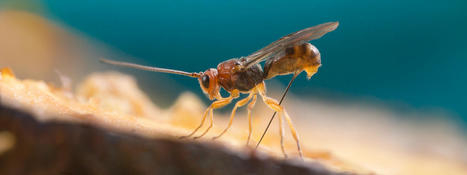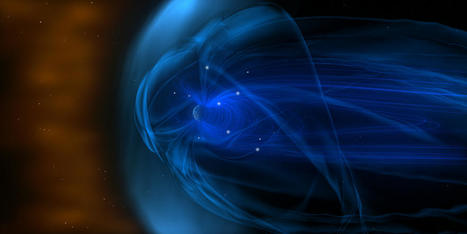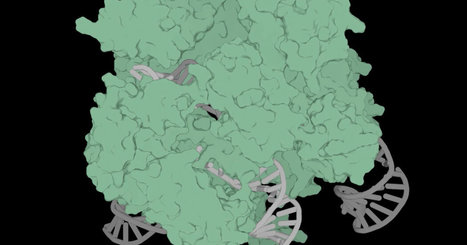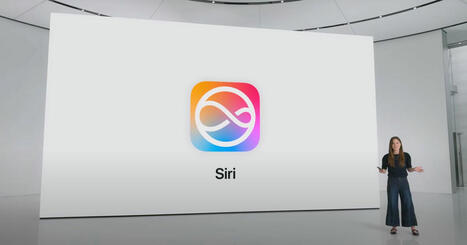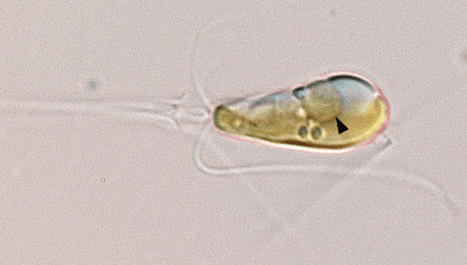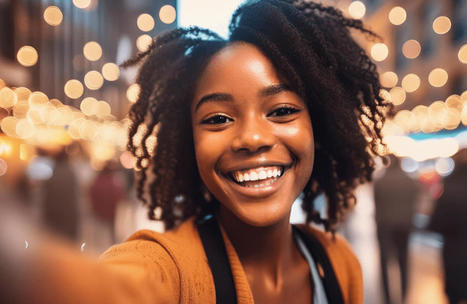 Your new post is loading...

|
Scooped by
Antonios Bouris
June 28, 2024 9:18 PM
|
Amazon received critical headlines this year when reports questioned the “Just Walk Out” technology installed at many of its physical grocery stores. The AI-powered system enables customers at many of its Amazon Fresh and Amazon Go shops to simply pick their items, and then leave. The AI uses lots of sensors to work out what you have chosen. You then get automatically billed. However, back in April it was widely reported that rather than solely using AI, Just Walk Out needed around 1,000 workers in India to manually check almost three quarters of the transactions. Amazon was quick to claim that the reports were “erroneous”, and that staff in India were not reviewing video footage from all the shops. Instead it said that the Indian workers were simply reviewing the system. Amazon added that “this is no different than any other AI system that places a high value on accuracy, where human reviewers are common”.
Read the full article at: www.bbc.com

|
Rescooped by
Antonios Bouris
from Amazing Science
June 28, 2024 8:52 PM
|
Scientists at UC Riverside have demonstrated a new, RNA-based vaccine strategy that is effective against any strain of a virus and can be used safely even by babies or the immunocompromised. Every year, researchers try to predict the four influenza strains that are most likely to be prevalent during the upcoming flu season. And every year, people line up to get their updated vaccine, hoping the researchers formulated the shot correctly. The same is true of COVID vaccines, which have been reformulated to target sub-variants of the most prevalent strains circulating in the U.S. This new strategy would eliminate the need to create all these different shots, because it targets a part of the viral genome that is common to all strains of a virus. The vaccine, how it works, and a demonstration of its efficacy in mice is described in a paper published recently in the Proceedings of the National Academy of Sciences (PNAS).
Read the full article at: news.ucr.edu
Via Dr. Stefan Gruenwald

|
Rescooped by
Antonios Bouris
from Amazing Science
June 20, 2024 9:14 PM
|
Google has introduced a family of multimodal models, called Gemini, that exhibit remarkable capabilities across image, audio, video, and text understanding. The Gemini family consists of Ultra, Pro, and Nano sizes, suitable for applications ranging from complex reasoning tasks to on-device memory-constrained use-cases. Evaluation on a broad range of benchmarks shows that the most-capable Gemini Ultra model advances the state of the art in 30 of 32 of these benchmarks - notably being the first model to achieve human-expert performance on the well-studied exam benchmark MMLU, and improving the state of the art in every one of the 20 multimodal benchmarks we examined. Thus, Google believes that the new capabilities of the Gemini family in cross-modal reasoning and language understanding will enable a wide variety of use cases. In this article the authors discuss their approach toward post-training and deploying Gemini models responsibly to users through services including Gemini, Gemini Advanced, Google AI Studio, and Cloud Vertex AI.
Read the full article at: arxiv.org
Via Dr. Stefan Gruenwald

|
Scooped by
Antonios Bouris
June 15, 2024 3:23 AM
|
Discover five must-read books on AI and ChatGPT in education, recommended by educators. These books offer practical insights and strategies to enhance teaching with AI.
I've read far too many books on ChatGPT and artificial intelligence. Almost all of them are a waste of time when it comes to applying them to education. But, there are five books educators on LinkedIn, X (formerly Twitter) and Facebook have recommended. And it's these five books I recommend to every educator exploring AI.
Read the full article at: www.forbes.com

|
Rescooped by
Antonios Bouris
from Amazing Science
June 8, 2024 8:03 AM
|
A new report reinforces that the virus is not going away. Even as national institutions struggle to coordinate meaningful trials for possible long COVID treatments, researchers continue to tally the damage. New findings suggest that the disease’s reach isn’t merely long—it’s still growing. Three years after their initial bouts with COVID-19, patients who’d once been hospitalized with the virus remained at “significantly elevated” risk of death or worsening health from long COVID complications, according to a paper published May 30, 2024 in Nature Medicine. Even among those whose initial cases didn’t require a hospital stay, the threat of long COVID and several of its associated issues remained real, the researchers found. And cumulatively, at three years, long COVID results in 91 disability-adjusted life years (DALY) per 1,000 people—DALYs being a measure of years lost to poor health or premature death. That is a higher incidence than either heart disease or cancer.
Published in Nat. Medicine (May 30 2024):
Read the full article at: fortune.com
Via Juan Lama, Dr. Stefan Gruenwald

|
Rescooped by
Antonios Bouris
from Amazing Science
May 31, 2024 2:04 AM
|
To protect and rear their young, some insects have transformed wild viruses into tiny biological weapons. If you puncture the ovary of a wasp called Microplitis demolitor, viruses squirt out in vast quantities, shimmering like iridescent blue toothpaste. “It’s very beautiful, and just amazing that there’s so much virus made in there,” says Gaelen Burke, an entomologist at the University of Georgia. M. demolitor is a parasite that lays its eggs in caterpillars, and the particles in its ovaries are “domesticated” viruses that have been tuned to persist harmlessly in wasps and serve their purposes. The virus particles are injected into the caterpillar through the wasp’s stinger, along with the wasp’s own eggs. The viruses then dump their contents into the caterpillar’s cells, delivering genes that are unlike those in a normal virus. Those genes suppress the caterpillar’s immune system and control its development, turning it into a harmless nursery for the wasp’s young. The insect world is full of species of parasitic wasps that spend their infancy eating other insects alive. And for reasons that scientists don’t fully understand, they have repeatedly adopted and tamed wild, disease-causing viruses and turned them into biological weapons. Half a dozen examples already are described, and new research hints at many more. By studying viruses at different stages of domestication, researchers today are untangling how the process unfolds. Read the full article at: knowablemagazine.org
Via Juan Lama, Dr. Stefan Gruenwald

|
Scooped by
Antonios Bouris
May 31, 2024 1:44 AM
|
By definition, artists and designers are creative people. They work in these jobs because they have talent and skills that they love to share with the world.
So, it isn’t surprising that many of them are cautious or distrustful about the impact generative AI will have on their professional lives. However, like writers, architects, and other creative professionals, many find that it creates opportunities to work more efficiently and even enhance their creativity. Generative AI is transforming most industries, and the creative fields of art and design are certainly no exception. But by embracing it, artists, designers, illustrators, and animators could find themselves spending more of their time on the aspects of their work they are passionate about and less on the routine and mundane elements they'd rather skip over. Read the full article at: www.forbes.com

|
Rescooped by
Antonios Bouris
from Amazing Science
May 24, 2024 12:58 AM
|
Scientists used a neural network, a type of brain-inspired machine learning algorithm, to sift through large volumes of particle collision data. For over two decades, the ATLAS particle detector has recorded the highest energy particle collisions in the world within the Large Hadron Collider (LHC) located at CERN, the European Organization for Nuclear Research. Beams of protons are accelerated around the LHC at close to the speed of light, and upon their collision at ATLAS, they produce a cascade of new particles, resulting in over a billion particle interactions per second. Particle physicists are tasked with mining this massive and growing store of collision data for evidence of undiscovered particles. In particular, they’re searching for particles not included in the Standard Model of particle physics, our current understanding of the universe’s makeup that scientists suspect is incomplete. As part of the ATLAS collaboration, scientists at the U.S. Department of Energy’s (DOE) Argonne National Laboratory and their colleagues recently used a machine learning approach called anomaly detection to analyze large volumes of ATLAS data. The method has never before been applied to data from a collider experiment. It has the potential to improve the efficiency of the collaboration’s search for something new. The collaboration involves scientists from 172 research organizations. The team leveraged a brain-inspired type of machine learning algorithm called a neural network to search the data for abnormal features, or anomalies. The technique breaks from more traditional methods of searching for new physics. It is independent of — and therefore unconstrained by — the preconceptions of scientists. Read the full article at: www.anl.gov
Via Dr. Stefan Gruenwald

|
Rescooped by
Antonios Bouris
from AI for All
May 24, 2024 12:54 AM
|
"AI isn’t going to replace you at work. You will ..."
Some of the most influential influencers on social media sites aren’t people, but computer-generated digital creations. And soon digital “people” will be commonplace in business. In the past, fabricated fake folks were built the old-fashioned way — using Generative Adversarial Networks (GAN) AI technology (the process behind video deepfakes). Nowadays, phony friends are build using LLM-based genAI tools. One early digital influencer on Instagram, named Lil Miquela, has been 19 years old since 2016, is worth millions of dollars and was named one of the 25 most influential people on the Internet back in 2018, despite not being a person.
Read the full article at: www.computerworld.com
Via Leona Ungerer
The photo series focuses on the ephemera that will be acutely familiar to anyone who’s breastfed, making it relatable and emotionally provocative.
Philadelphia born and raised, Bre Furlong was an experienced commercial photographer working in the ad world before she decided to go freelance at the height of the pandemic. Exactly a week later, she found out she was pregnant. “Since then I’ve been figuring out how to merge my career and motherhood, and with little sleep and lots of espresso, we’re making it happen,” she says. Read the full article at: www.itsnicethat.com
Via ECAL Library

|
Rescooped by
Antonios Bouris
from AI for All
May 9, 2024 9:52 PM
|
"Teens are opening up to chatbots on Character.AI as a way to explore friendship. But some chatbots, like Psychologist, offer more guidance than they’re qualified to ..."
At the time, it seemed like the end of the world. “I used to cry every night,” said Aaron, who lives in Alberta, Canada. (The Verge is using aliases for the interviewees in this article, all of whom are under 18, to protect their privacy.) Eventually, Aaron turned to his computer for comfort. Through it, he found someone that was available round the clock to respond to his messages, listen to his problems, and help him move past the loss of his friend group. That “someone” was an AI chatbot named Psychologist. The chatbot’s description says that it’s “Someone who helps with life difficulties.” Its profile picture is a woman in a blue shirt with a short, blonde bob, perched on the end of a couch with a clipboard clasped in her hands and leaning forward, as if listening intently.
Read the full article at: www.theverge.com
Via Leona Ungerer

|
Rescooped by
Antonios Bouris
from Amazing Science
May 9, 2024 9:49 PM
|
NASA’s Innovative Advanced Concepts program (NIAC) has selected six visionary concept studies for additional funding and development. Each study has already completed the initial NIAC phase, showing their futuristic ideas – like a lunar railway system and fluid-based telescopes – may provide fresh perspectives and approaches as NASA explores the unknown in space. The NIAC Phase II conceptual studies will receive up to $600,000 to continue working over the next two years to address key remaining technical and budget hurdles and pave their development path forward. When Phase II is complete, these studies could advance to the final NIAC phase, earning additional funding and development consideration toward becoming a future aerospace mission. “These diverse, science fiction-like concepts represent a fantastic class of Phase II studies,” said John Nelson, NIAC program executive at NASA Headquarters in Washington. “Our NIAC fellows never cease to amaze and inspire, and this class definitely gives NASA a lot to think about in terms of what’s possible in the future.” The six concepts chosen for 2024 NIAC Phase II awards are: - Fluidic Telescope (FLUTE): Enabling the Next Generation of Large Space Observatories would create a large optical observatory in space using fluidic shaping of ionic liquids. These in-space observatories could potentially help investigate NASA’s highest priority astrophysics targets, including Earth-like exoplanets, first-generation stars, and young galaxies. The FLUTE study is led by Edward Balaban from NASA’s Ames Research Center in California’s Silicon Valley.
- Pulsed Plasma Rocket: Shielded, Fast Transits for Humans to Mars is an innovative propulsion system that relies on using fission-generated packets of plasma for thrust. This innovative system could significantly reduce travel times between Earth and any destination in the solar system. This study is led by Brianna Clements with Howe Industries in Scottsdale, Arizona.
- The Great Observatory for Long Wavelengths (GO-LoW) could change the way NASA conducts astronomy. This mega constellation low-frequency radio telescope uses thousands of autonomous SmallSats capable of measuring the magnetic fields emitted from exoplanets and the cosmic dark ages. GO-LoW is led by Mary Knapp with MIT in Cambridge, Massachusetts.
- Radioisotope Thermoradiative Cell Power Generator is investigating new in-space power sources, potentially operating at higher efficiencies than NASA legacy power generators. This technology could enable small exploration and science spacecraft in the future that are unable to carry bulky solar or nuclear power systems. This power generation concept study is from Stephen Polly at the Rochester Institute of Technology in New York.
- FLOAT: Flexible Levitation on a Track would be a lunar railway system, providing reliable, autonomous, and efficient payload transport on the Moon. This rail system could support daily operations of a sustainable lunar base as soon as the 2030s. Ethan Schaler leads FLOAT at NASA’s Jet Propulsion Laboratory in Southern California.
- ScienceCraft for Outer Planet Exploration distributes Quantum Dot-based sensors throughout the surface of a solar sail, enabling it to become an innovative imager. Quantum physics would allow NASA to take scientific measurements through studying how the dots absorb light. By leveraging the solar sail’s area, it allows lighter, more cost-effective spacecraft to carry imagers across the solar system. ScienceCraft is led by NASA’s Mahmooda Sultana at the agency’s Goddard Space Flight Center in Greenbelt, Maryland.
NASA’s Space Technology Mission Directorate funds the NIAC program, as it is responsible for developing the agency’s new cross-cutting technologies and capabilities to achieve its current and future missions. Read the full article at: www.nasa.gov
Via Dr. Stefan Gruenwald

|
Scooped by
Antonios Bouris
May 4, 2024 2:26 AM
|
Much as ChatGPT generates poetry, a new A.I. system devises blueprints for microscopic mechanisms that can edit your DNA.
Generative A.I. technologies can write poetry and computer programs or create images of teddy bears and videos of cartoon characters that look like something from a Hollywood movie. Now, new A.I. technology is generating blueprints for microscopic biological mechanisms that can edit your DNA, pointing to a future when scientists can battle illness and diseases with even greater precision and speed than they can today.
Read the full article at: www.nytimes.com
|

|
Scooped by
Antonios Bouris
June 28, 2024 9:16 PM
|
Researchers have developed an AI algorithm that can spot a deepfake video with 98% accuracy. In a paper presented earlier this month, researchers from Multimedia and Information Security Lab (MISL) in Drexel’s College of Engineering explained that they had created the “MISLnet algorithm” which can detect telltale signs of deepfake and manipulated pieces of media with incredible accuracy.
Read the full article at: petapixel.com

|
Scooped by
Antonios Bouris
June 20, 2024 9:17 PM
|
We didn’t stop climbing mountains when chair lifts were invented. Similarly, there will always be something uniquely special and valuable about human music-making. Read the full article at: theconversation.com

|
Scooped by
Antonios Bouris
June 20, 2024 9:04 PM
|
McDonald's is killing its AI drive-thru order experiment — at least for now — after social media reports of bizarre mistakes. Read the full article at: www.axios.com

|
Scooped by
Antonios Bouris
June 15, 2024 3:21 AM
|
By enabling abilities like context and natural conversation, generative AI technology could bring us actually useful digital assistants.
Voice assistants hold so much promise, but in the decade-plus since Apple’s Siri and Amazon’s Alexa first wormed their ways into our lives, their most compelling use is still setting timers. Competition from Google’s Assistant (and if we’re being charitable, Samsung’s Bixby) failed to light the spark of innovation in this space, and in many ways, voice control has regressed. These assistants regularly misunderstand, mishear, and sometimes just don’t listen at all. They’re a far cry from the proactive, actually smart digital assistants they were originally pitched as. Read the full article at: www.theverge.com

|
Scooped by
Antonios Bouris
June 2, 2024 9:21 PM
|
The first-ever nitrogen-fixing organelle in a eukaryotic cell has been confirmed.
An event that is only known to have happened three times before in the history of life on Earth has just been documented again. A marine bacterium was subsumed into its algal host organism, co-evolving with it for long enough that it can now be considered an organelle, part of the alga’s cellular machinery. That means these algae are the first eukaryotes (organisms with their DNA in a membrane-bound nucleus) known to contain an organelle capable of fixing nitrogen. “It’s very rare that organelles arise from these types of things,” said Tyler Coale, first author of one of two recent papers on the discovery, in a statement. “Very rare” could actually be considered an understatement. The first time this happened – as far as we know – it gave rise to the very first complex life by birthing mitochondria. Since then, it’s happened twice more, including over a billion years ago, marking the dawn of plant life on Earth by giving us the chloroplast. The groundwork for the latest finding was laid almost 30 years ago, when a team led by UC Santa Cruz Professor Jonathan Zehr discovered a new cyanobacterium in the Pacific Ocean with the ability to fix nitrogen. That’s the process by which microbes pull free nitrogen from the environment and combine it with other elements to form new nitrogen compounds, like the fertilizers that are essential for life to thrive.
Read the full article at: www.iflscience.com

|
Rescooped by
Antonios Bouris
from AI for All
May 31, 2024 2:03 AM
|
In the vibrant world of bartending, where every cocktail tells a story and every mix is an art, a new chapter is being stirred by Artificial Intelligence (AI). This isn’t a tale of machines replacing the human touch but one where technology and tradition blend to create a new era of mixology. From AI recommendations to robotic bartenders, this blog explores how AI is not just changing the way drinks are served but is enriching the very essence of bartending.
Bartending, a craft that combines skill, creativity, and an understanding of flavors, is embracing AI, not as a replacement but as a complement. AI in bartending isn’t about removing the bartender; it’s about enhancing their capabilities and offering them new ways to delight their patrons. Consider, while there is a wide assortment of drink recipes, bartenders find more and more patrons are looking for unusual, or at least specialized, drinks based on their individual palettes. This ranges not just on the type of alcohol but the level of sweetness, bitterness, peatyness, etc. In essence, people want a strong level of individual taste presences for their drinks.
Read the full article at: www.forbes.com
Via Leona Ungerer

|
Scooped by
Antonios Bouris
May 31, 2024 1:41 AM
|
Eleven years of wonder, exploration, observation, study, making, remaking, and countless hours of grinding and polishing. Oftentimes, in the grueling tension of discovery, beauty emerges in so many ways. Thanks for taking the time to wonder what emerged from our collaboration with Destin and Smarter Every Day. Cal has created twenty signed and serialized Prince Rupert’s Drop-inspired pieces entitled, The Beauty in Tension – gradually he will produce more.
Read the full article at: www.calbreed.com

|
Rescooped by
Antonios Bouris
from AI for All
May 24, 2024 12:58 AM
|
"When Tiffin University decided to integrate artificial intelligence tools directly into its courses and curriculum, the Center for Online and Extended..."
When Tiffin University decided to integrate artificial intelligence tools directly into its courses and curriculum, the Center for Online and Extended Learning implemented the use of design statements on written assignments. This short-term intervention is the first step in a long-term effort to ensure students learn to use AI tools ethically and responsibly. Read the full article at: er.educause.edu
Via Leona Ungerer

|
Rescooped by
Antonios Bouris
from AI for All
May 17, 2024 8:30 PM
|
"Being able to detect lowest form of wit could help AI interact with people more naturally, say scientists ..."
Never mind that it can pass the bar exam, ace medical tests and read bedtime stories with emotion, artificial intelligence will never match the marvel of the human mind without first mastering the art of sarcasm. But that art, it seems, may be next on the list of the technology’s dizzying capabilities. Researchers in the Netherlands have built an AI-driven sarcasm detector that can spot when the lowest form of wit, and the highest form of intelligence, is being deployed. Read the full article at: www.theguardian.com
Via Leona Ungerer

|
Rescooped by
Antonios Bouris
from AI for All
May 17, 2024 8:17 PM
|
"As AI use continues to grow in classrooms, educators need to be aware of the ethics and legal concerns involved ..."
The integration of AI-powered resources and tools in education has the potential to reshape the learning landscape, offering personalized insights and rapid feedback. However, with these opportunities come critical ethical and legal concerns that educators must consider. From unintentional data capture to the perpetuation of biases and misinformation, the risks inherent in AI implementation demand careful attention. In this context, educators play a pivotal role in safeguarding students.
Read the full article at: www.techlearning.com
Via Leona Ungerer

|
Rescooped by
Antonios Bouris
from AI for All
May 9, 2024 9:51 PM
|
"Tried and tested: These AI image generators consistently delivered the best results. Here's a look at how they work, how much they cost, and how they handled a specific prompt ..."
The use of AI to generate weird and wonderful imagery is definitely my favorite application of the cutting-edge tech. I’ve tested outAI writing toolsandAI productivity tools, but putting the host of AI image generators through their paces was hands-down the most fun I’ve had in testing tools in ages (and Ilovetesting tools). As with other AI tools, there’s no shortage of artificial intelligence image generators in the market. I’m sure by the time this article is published, about 35 more will have just launched that I’ll need to test. By now, we all know that AI image generators can come up with all sorts of fantastical, eclectic imagery. But since you’re reading the Buffer blog, I’m going to be presumptuous and assume you’re either in marketing, a small business owner, or a creator — and you’re probably looking for a tool that can do something you can actually use in your work.
Read the full article at: buffer.com
Via Leona Ungerer

|
Rescooped by
Antonios Bouris
from Geography Education
May 4, 2024 2:42 AM
|
"While it’s easy to show that people differ in navigational ability, it has proved much harder for scientists to explain why. There’s new excitement brewing in the navigation research world, though. By leveraging technologies such as virtual reality and GPS tracking, scientists have been able to watch hundreds, sometimes even millions, of people trying to find their way through complex spaces, and to measure how well they do. Though there’s still much to learn, the research suggests that to some extent, navigation skills are shaped by upbringing." Read the full article at: knowablemagazine.org
Via Seth Dixon
|



 Your new post is loading...
Your new post is loading...







